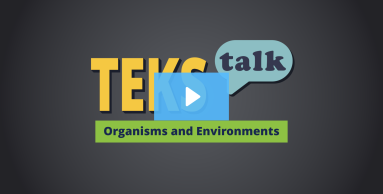- Science
- Grade KG
- Organisms and environments
Science.K.12.A
observe and identify the dependence of plants on air, sunlight, water, nutrients in the soil, and space to grow; and

Knowledge and Skills Statement
The following is an example of how to assess proficiency of this student expectation (SE) or a portion of the SE.
Students should demonstrate that they understand that plants have needs in order to grow successfully. After observing plants grow, they should be able to identify those needs in a story, a picture, or while observing other real plants. Provide students with a list of things a plant might or might not need. As the words are read aloud, students will color the word if it is something plants depend on to grow. Have students glue the list into their notebook and add an illustration of a plant with all the things it depends on to grow. Students might use the list to label their illustrations. They may recognize that the roots of the plant are usually in soil and that the stems, leaves, flowers, and fruits are exposed to the air and sunlight. This observation should lead to a conversation about how plants use soil. They may also observe that plants that are planted too closely together may not grow as large as plants with more space between them.
The further explanation is designed to be a resource for educators that helps them better understand the topic their students are learning. Further explanations may be written at a more complex level than would be expected for students at the grade level.
One misconception that students have about plants is that soil provides them with food. Plants can be grown hydroponically, with the nutrients being added to the water. Some plants, called air plants, do not require soil at all. Nutrients, such as the minerals nitrates and phosphates, are chemical compounds that are required for living things to function properly and maintain health.
Research
McGough, Julie, and Lisa Nyberg. 2013. “Strong Stems Need Strong Sprouts!” Science and Children 50, no. 5 (January 2013): 27–33. https://www.jstor.org/stable/43176338 Accessed November 17, 2022.
Summary: It is explained in this article that observing plants and plant parts gives students a better understanding of many science concepts. Students can keep different plants' outside and inside and draw and label the parts they see. The class can observe several plants with different needs to show students what can happen to plants if they do not obtain their basic needs. These observations should be recorded and discussed. Students should be encouraged to ask about plants and can create models with classroom and household items to represent plants and their parts and how they help them meet their needs.
